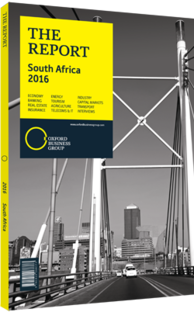Andre de Ruyter, CEO, Nampak: Interview

Interview: Andre de Ruyter
What factors are driving demand for packaging products across markets in Africa?
ANDRE DE RUYTER: In common with the rest of the continent, South Africa’s rising middle class has led to increased demand for fast-moving consumer goods (FMCGs) that require packaging, which tends to be correlated with consumer demand and spending. We have seen strong, sustained growth in demand for beverage cans in particular, with growth rates far in excess of GDP growth at around 8-12% per annum. A contributing factor to this is the substitution of glass.
As consumers feel under pressure due to factors such as rising inflation, a weakening rand, the high cost of fuel and tighter access to credit, their purchasing preferences are shifting accordingly, affecting demand for different types of packaging. For example, consumers are shifting preferences from fresh to processed protein, and from fresh meat to canned fish. Indeed, as the rand weakens, it becomes more expensive to import frozen fish. On the other hand, brewers such as SABM iller that are in operation on the continent tend to have strong distribution networks and can therefore tap into more informal markets by reaching small “spaza” shops.
How has the weakened rand affected economic growth and productivity in South Africa?
DE RUYTER: The country’s overall economic environment has had a significant impact on the state of the manufacturing industry. In addition to the weakness of the rand and the volatile exchange rate, electricity shortages and slow headline growth have put pressure on margins and had a recessionary impact on the sector as a whole. Manufacturers are therefore looking to reduce costs, particularly fixed costs such as labour and energy.
For many years, the South African manufacturing industry had externalised many of its inefficiencies by relying on cheap labour and energy. However, neither of these will be readily available in the medium to long term, so manufacturers will need to become more efficient if they want to remain competitive enough to export abroad. Absorbing above-inflation increases on wages without seeing an uptick in productivity has made it difficult to compete. The packaging industry is particularly prone to excessive complexity so most players will look to simplify operations.
While the costs of importing raw materials may rise due to the weakening rand, energy is by far the largest challenge facing the industry. Any new investment in the industry will require a reliable supply of energy. For example, packagers who utilise glass furnaces can lose both time and product during an extended period of load-shedding, while relying on diesel generators can be very expensive. Ensuring policy consistency and coordination, as well as the stability of the labour market, would therefore give manufacturers the confidence they require to successfully continue their operations in South Africa.
To what extent do improved logistics in South Africa benefit the rest of the continent?
DE RUYTER: While South Africa’s transportation and logistics infrastructure is good compared to the rest of the continent, there remains room for improvement. For instance, most manufacturers import raw materials via ports, but these can often be held up by delays at Customs. Such delays also affect land transportation at border crossings. Most freight is currently carried by road, which is becoming more expensive as fuel costs continue to rise. There is potential to use rail more extensively once Transnet’s capital expenditure programme for infrastructure is completed. It is difficult to transport packaging over long distances, so retailers are using central distribution systems to improve their networks, helping manufacturers across the continent.
You have reached the limit of premium articles you can view for free.
Choose from the options below to purchase print or digital editions of our Reports. You can also purchase a website subscription giving you unlimited access to all of our Reports online for 12 months.
If you have already purchased this Report or have a website subscription, please login to continue.

